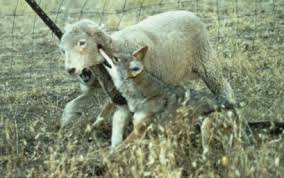
Predators are wild animals that hunt or prey on other animals as a source of food. They are Carnivores (Carnivora), meaning it is natural for them to kill and eat meat. Livestock is looked after by people and they have as a result not evolved to run as fast as wild prey species and are thus ‘easy targets’. Predators learn hunting techniques from their own group when they are young and once one animal has found a way to hunt livestock, it will teach the others.
In general, it is important to note that predators actually prefer wild prey and tend to take more livestock during the dry season when predators are weak and have less energy to hunt.
The rapid expansion of livestock farming throughout Africa is leading to greater conflicts between predators and humans and has reduced the amount of wild prey available to predators. Predators kill livestock causing large financial losses and in turn, humans destroy the predators. The problem is multiplied on the edges of protected areas as predators are often drawn out of parks for the water that is always present for livestock, and then they discover a grocery store full of easy prey items; the good life until their untimely death. Continuous removal of predators leaves the territory open, which serves as a vacuum sucking in new predators all the time and leading to large predator losses. Without a significant breakthrough for mitigating predation on livestock, it is likely that the precipitous decline of e.g. lions will continue and e.g. African wild dogs are already highly endangered.
The Carnivora, as the name implies, are generally predatory, and to a greater or lesser extent, all canids live by killing prey. This fact raises three related questions in the context of conserving and managing wild canids.
- First, to what extent are the populations of canids limited by their prey, and to what extent do they limit the numbers of their prey?
- Second, and with respect to valuable prey, is the impact of predation by canids disadvantageous to people?
- Third, where predation by canids throws them into conflict with people, how might such conflict best be resolved?
Problems are likely to arise with predation on three categories of prey: domestic stock, wild game, and endangered species. Clearly, the delineation of these three categories is indistinct; for example, the management of incubator and pen-reared game birds such as pheasants has more in common with the domestic stock than it does with wild game.

The identification of the predator involved in killing livestock and animals is fairly difficult to master as there are many variables. Sometimes scavenger/predators get blamed for a kill when in fact they are just eating what was killed by local dogs or died of natural causes. Getting to the carcass quickly after the animal's death is critical for the proper identification of the guilty species.